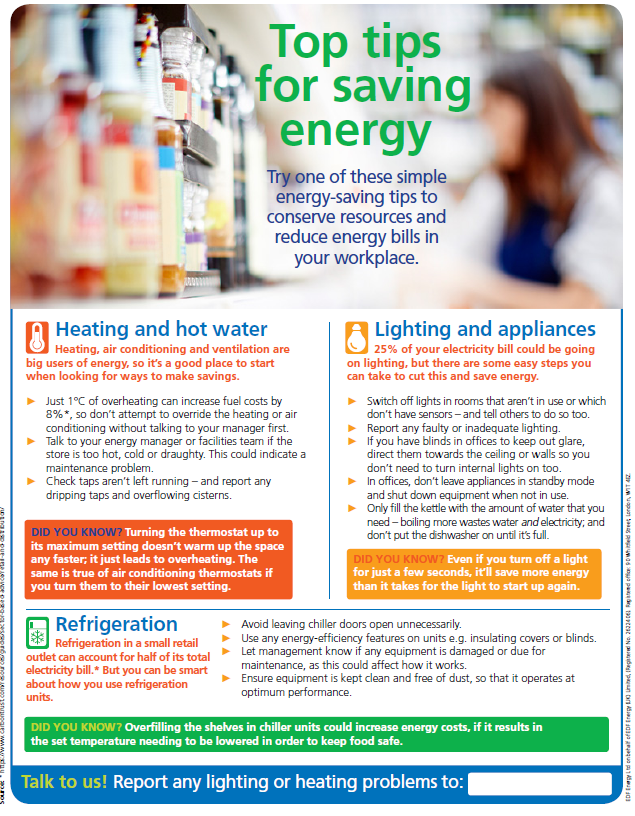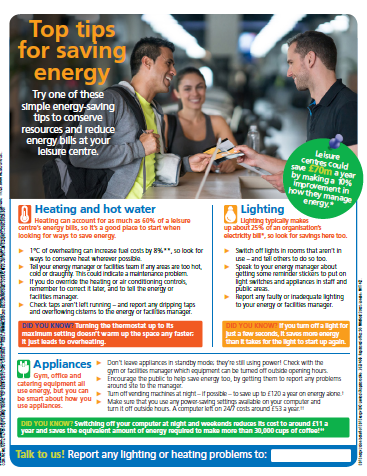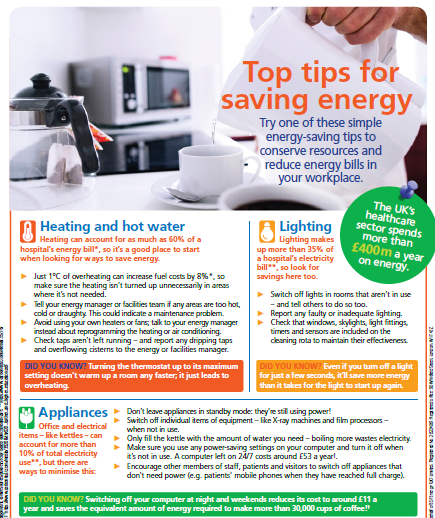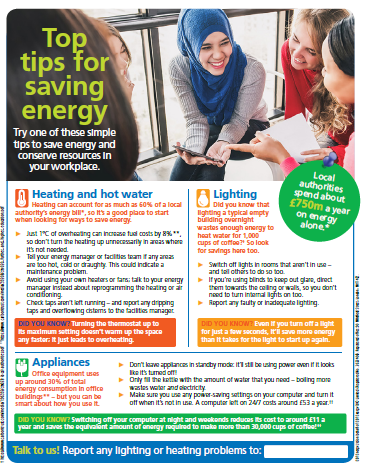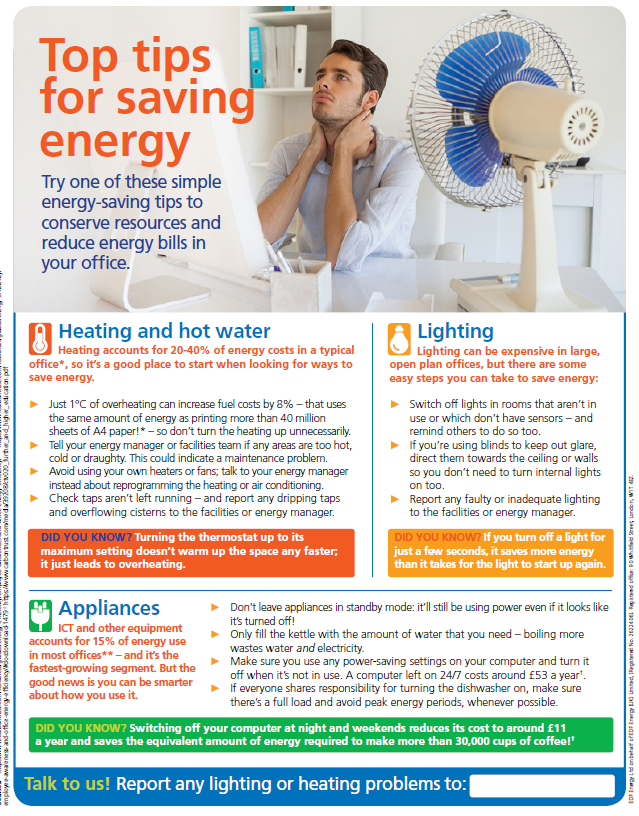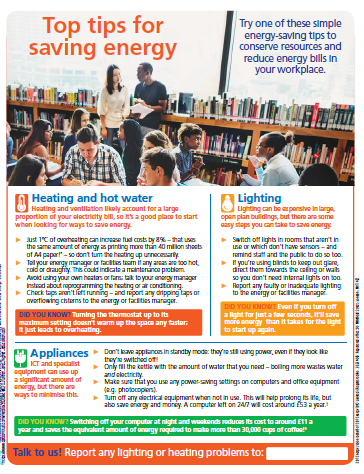Energy Efficiency tips and advice for business
Simple measures, significant savings
We know all businesses are different and it can sometimes be difficult to see where you can save energy. But simple actions such as turning off equipment that isn’t being used can save energy.
That's why we've put together these guides - to give you simple and effective tips that work for you. No matter what type of organisation you are, we've created guides with tips on everything from your workplace kitchen, to running a leisure centre!
TOP TIPS:
- During the winter, look at which areas of your site you’re lighting and heating. You may find there are areas where no one is in, or times of day you could reduce or switch it off.
Know your business energy use and waste - If you only take meter readings every now and then, it’s hard to tell when you use the most energy and where you might be wasting it. The solution? Smart meters. See how much you’re spending on your business’ energy throughout the day, so you can adjust energy-heavy tasks, and trim wasted energy. Get more accurate bills instead of estimates by cutting out the hassle and time of having to do manual meter readings.
Choose your type of energy
Saving energy is definitely a good idea. But have you also considered what type of energy you're purchasing?
We'll help you work towards your low-carbon goals.
